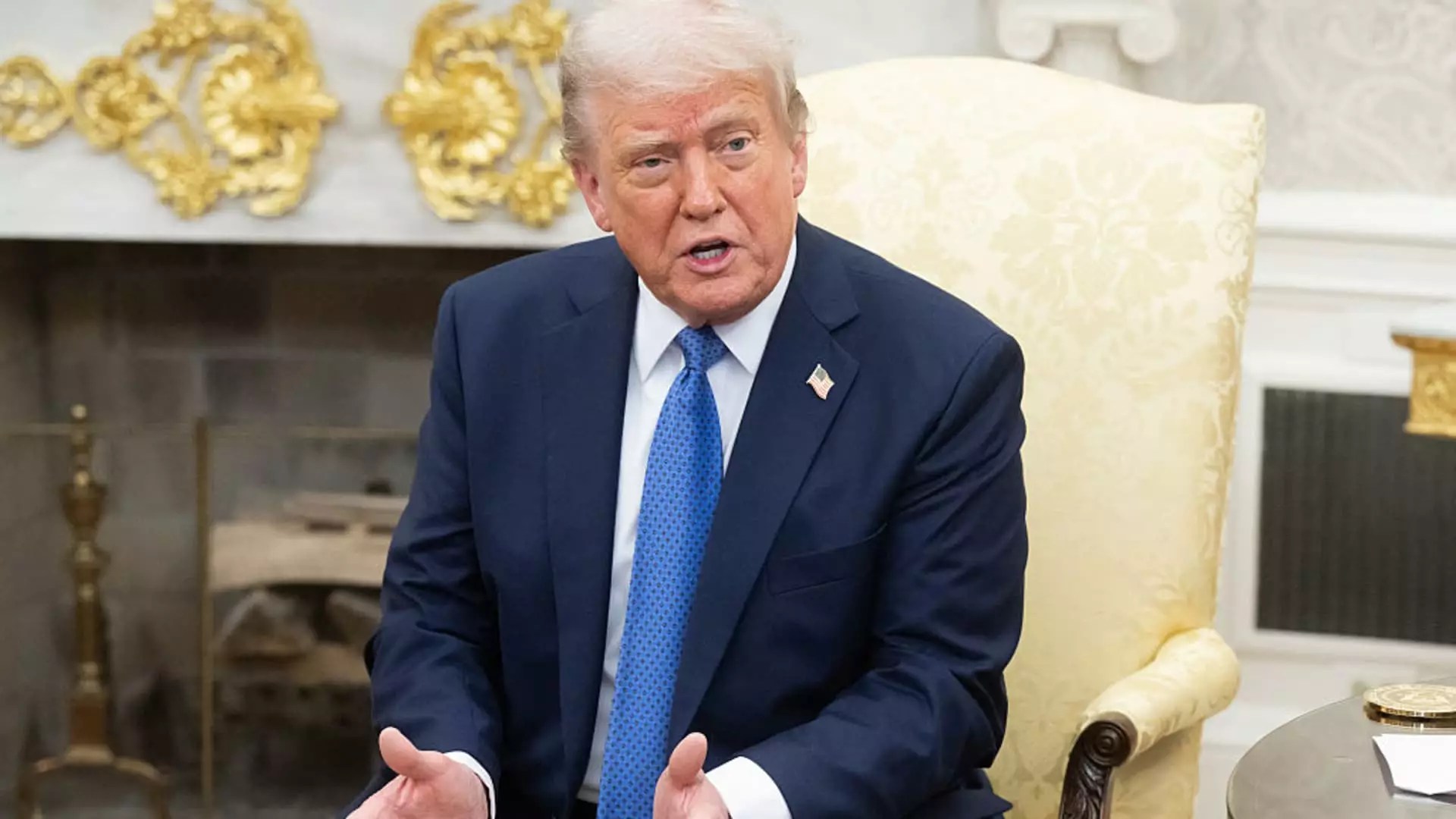When President Donald Trump announced his controversial tariffs, the market reaction was immediate and visceral. The twist? Trump claimed that market volatility had no bearing on his decisions. This dismissal raises eyebrows; if the president believed his tariffs would boost American interests, why brush aside the significant market backlash? Trump characterized the bond market as having “the yips,” but it reflects a broader hesitation in financial circles. Investors are sensitive to erratic policy changes, and the sharp adjustments in Treasury yields serve as a clear message: uncertainty can lead to panic.
The Double-Edged Sword of Protectionism
The heart of Trump’s tariff strategy is the notion of reciprocity, yet his approach seems to lack both finesse and foresight. By imposing a sweeping 10% tariff on all imports, Trump appears to view trade as a zero-sum game. However, this perspective fails to consider the long-term implications for American consumers and businesses that rely on foreign goods. Higher tariffs may temporarily protect domestic industries, but they also risk retaliatory measures that can stifle growth and escalate into full-blown trade wars. While Trump’s bravado may appeal to his base, the reality is that inflated prices will inevitably lead to consumer resentment and economic uncertainty.
Inflation Fears and Market Volatility
The economic unease following Trump’s tariff decree was palpable, as it ignited fears of inflation and recession across various sectors. Investors rushed to reassess their positions leading to an abrupt spike in Treasury yields. When yields increase at such a rapid pace, it signals an impending shift in investor confidence. The market’s recoil from stocks and the U.S. dollar underscores an essential principle: economic policies cannot exist in a vacuum. The ripple effects of protectionist measures extend beyond national borders and can destabilize global trade networks.
The Art of Negotiation Versus Tariff Threats
Trump’s claim that he would extend the tariff timeline for negotiations is an interesting strategy but one fraught with risk. Holding negotiations hostage to tariffs may yield short-term tactical wins, but it also raises the stakes and complicates discussions. The president’s ability to navigate these negotiations effectively could determine the long-term health of the U.S. economy. Yet, calling a potential outcome a “total victory” even with outrageous tariffs still in place signals a narrow understanding of success. Growth and cooperation should be the ultimate goals, not merely revenue generation from high tariffs.
The Legacy of Market Instability
If Trump continues on this path, the repercussions for the bond market might reflect his administration’s unsettled legacy. The assertion that he’s not worried about economic feedback from financial markets belies a disconnect from reality. As a center-right liberal, it’s important to recognize the need for coherence and stability in trade policies. While striving for fair trade is crucial, the risks associated with rampant populism and haphazard tariffs can be damaging. Ultimately, leaders must consider the broader economy and the individuals who comprise it, for unchecked volatility can erode trust in the financial system itself.


Leave a Reply